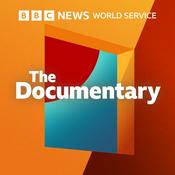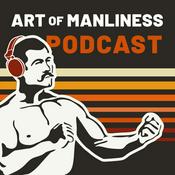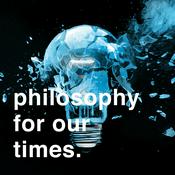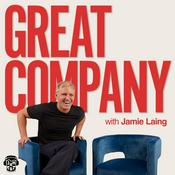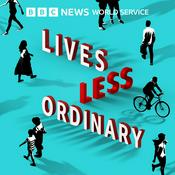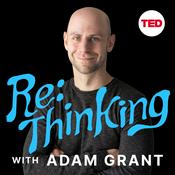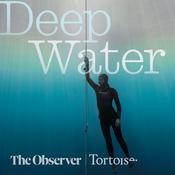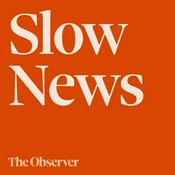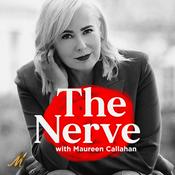346 episodes

“Why I donate: some selfish reasons” by Kestrel🔸
2025/12/28 | 5 mins.
This year, I have given money to a range of EA cause areas. Most of it has either been towards global health and development, or EA infrastructure I believe does or could lead to effective fundraising for global health and development. The following are a list of very selfish personal reasons why I like to do this. I feel the selfless reasons have been adequately covered elsewhere, so I'm intentionally leaving them off. I get to ignore ineffective charity adverts. In order to genuinely convince myself that I am helping, I want to see things like well-regarded cost-effectiveness metrics. I do not like heartstring-tugging advertising or vague statements of "should", particularly to do with orphanages. They make me feel a bit ill. So I am glad that donating effectively gives me a very good justification to ignore them. It is a marker of my politics. I don't believe that poor people I don't know in rich countries are 100× more worthy of my help [i.e. worthy of help that's 100× less cost-efficient] than poor people in poor countries. This is because I don't believe anyone is 100× more worthy than anyone. Choosing to donate based on the cost-effectiveness of [...] ---Outline:(00:36) I get to ignore ineffective charity adverts.(01:02) It is a marker of my politics.(01:36) Giving expresses abundance.(02:32) Ive stopped valuing things by how expensive they are.(03:17) People have stopped (openly) judging me about some of my life choices.(03:56) I get to hang out with cool people and be in the cool kids club.(04:16) It helps me genuinely care about helping people.(04:37) It motivates me at my job.(05:01) By giving effectively, I can do great things. --- First published: December 12th, 2025 Source: https://forum.effectivealtruism.org/posts/84PYRzFCeqZGfgv3N/why-i-donate-some-selfish-reasons --- Narrated by TYPE III AUDIO.

“Ten big wins in 2025 for farmed animals” by LewisBollard
2025/12/26 | 10 mins.
Note: This post was crossposted from the Coefficient Giving Farm Animal Welfare Research Newsletter by the Forum team, with the author's permission. The author may not see or respond to comments on this post. It can feel hard to help factory-farmed animals. We’re up against a trillion-dollar global industry and its army of lobbyists, marketeers, and apologists. This industry wields vast political influence in nearly every nation and sells its products to most people on earth. Against that, we are a movement of a few thousand full-time advocates operating on a shoestring. Our entire global movement — hundreds of groups combined — brings in less funds in a year than one meat company, JBS, makes in two days. And we have the bigger task. The meat industry just wants to preserve the status quo: virtually no regulation and ever-growing demand for factory farming. We want to upend it — and place humanity on a more humane path. Yet, somehow, we’re winning. After decades of installing battery cages, gestation crates, and chick macerators, the industry is now removing them. Once-dominant industries, like fur farming, are collapsing. And advocates are building momentum toward bigger reforms for all farmed animals. Here are [...] --- First published: December 16th, 2025 Source: https://forum.effectivealtruism.org/posts/qTnsqYrmSTHawTNa6/ten-big-wins-in-2025-for-farmed-animals --- Narrated by TYPE III AUDIO. ---Images from the article:Apple Podcasts and Spotify do not show images in the episode description. Try Pocket Casts, or another podcast app.

“The Further Pledge: Voluntary Simplicity” by GeorgeBridgwater
2025/12/16 | 12 mins.
Conscious Meaning We share every moment with trillions of other conscious beings. Some are much like us, and others experience the world very differently. Creatures without a language to structure their thoughts, some who see broader spectrums of light or others who might experience the world in comparative slow motion. Each conscious moment immediately slips into the past largely unobserved and forgotten. They fall through time like snow to become frozen in the past. Always to have happened just as they did. Each conscious moment is transient and one small part of a vast whole, so one could see any individual as meaningless and insignificant. But every conscious moment is imbued with meaning. Happiness that need not justify itself and pains that consume any desire but to escape them. As individuals, we are not responsible for the state of the world. You did not choose to create disease, poverty and mental illness. You can’t control nature, and you can’t control the society around you. Many schools of philosophy disagree exactly on what our moral obligations are to others. Given this disagreement, we could default to radical scepticism that all attempts to decide what the right way to [...] ---Outline:(00:11) Conscious Meaning(02:06) Ovarian lottery(03:49) The Good we can do(05:18) Creating Balance(06:13) Voluntary Simplicity(08:12) Setting Salary based on the Worlds average income(10:12) Appendix: Let he who is without sin cast the first stone --- First published: December 11th, 2025 Source: https://forum.effectivealtruism.org/posts/wd7XsSwqWCzd2uzhq/the-further-pledge-voluntary-simplicity --- Narrated by TYPE III AUDIO.

“GWWC’s 2025 evaluations of evaluators” by Aidan Whitfield🔸, Giving What We Can🔸
2025/12/15 | 7 mins.
The Giving What We Can research team is excited to share the results of our 2025 round of evaluations of charity evaluators and grantmakers! In this round, we completed two evaluations that will inform our donation recommendations for the 2025 giving season. As with our previous rounds, there are substantial limitations to these evaluations, but we nevertheless think that they are a significant improvement to a landscape in which there were previously no independent evaluations of evaluators’ work. In this post, we share the key takeaways from our two 2025 evaluations and link to the full reports. In our conclusion, we explain our plans for future evaluations. Please also see our website for more context on why and how we evaluate evaluators. We look forward to your questions and comments! (Note: we will respond when we return from leave on the 8th of December) Key takeaways from each of our 2025 evaluations The two evaluators included in our 2025 round of evaluating evaluators were: GiveWell (full report) Happier Lives Institute (full report) GiveWell Based on our evaluation, we have decided to continue including GiveWell's Top Charities, Top Charities Fund and All Grants Fund in GWWC's [...] ---Outline:(01:08) Key takeaways from each of our 2025 evaluations(01:25) GiveWell(03:18) Happier Lives Institute (HLI)(06:29) Conclusion and future plans --- First published: December 1st, 2025 Source: https://forum.effectivealtruism.org/posts/sAiHYuuGGT7qvne5P/gwwc-s-2025-evaluations-of-evaluators --- Narrated by TYPE III AUDIO.

“I Donate because I am Christian” by NickLaing
2025/12/15 | 7 mins.
And Effective Altruism has put my faith community to shame The BeginningWhen I became a Christian age 15 my life began to transform, but sadly my first external play was proclaiming no sex before marriage and saying F#$% a bit less (I’ve since resumed). Two years later at premed, Tuesday was my only night with no tutorial so I joined a church group, which was weirdly labelled “Social Justice”. I had zero clue what this was aboutt, maybe preventing bullying at school?. Our leader Jo opened with a question I’ll never forget. “I’m fundraising for World Vision and I told my chain-smoking friend I’ll buy him a pack of cigs if he joins the fundraising effort. Do you guys think that's OK?” As we discussed the conundrum for the next hour my heart jumped a little. Perhaps my time, skills and money could be useful for something more than just a comfortable life in the ‘burbs…Why do I Give?“When you give….” Jesus Christian motivations for giving vary wildly. Some mostly give to keep their church club solvent, others to save face, but most have deeper motivations. Here are mine. [...] ---Outline:(01:06) Why do I Give?(01:24) Gratitude and Joy(02:24) Utilitarian(03:14) More to come?(03:49) Christians aren't great at Giving(04:04) Father of Earning to Give?(05:07) We're not much better(06:08) Effective Altruist Giving Impresses me --- First published: December 10th, 2025 Source: https://forum.effectivealtruism.org/posts/QrQ9jwFSNoEdd373f/i-donate-because-i-am-christian --- Narrated by TYPE III AUDIO.
More Society & Culture podcasts
Trending Society & Culture podcasts
About EA Forum Podcast (Curated & popular)
Listen to EA Forum Podcast (Curated & popular), Modern Wisdom and many other podcasts from around the world with the radio.net app

Get the free radio.net app
- Stations and podcasts to bookmark
- Stream via Wi-Fi or Bluetooth
- Supports Carplay & Android Auto
- Many other app features
Get the free radio.net app
- Stations and podcasts to bookmark
- Stream via Wi-Fi or Bluetooth
- Supports Carplay & Android Auto
- Many other app features


EA Forum Podcast (Curated & popular)
download the app,
start listening.









